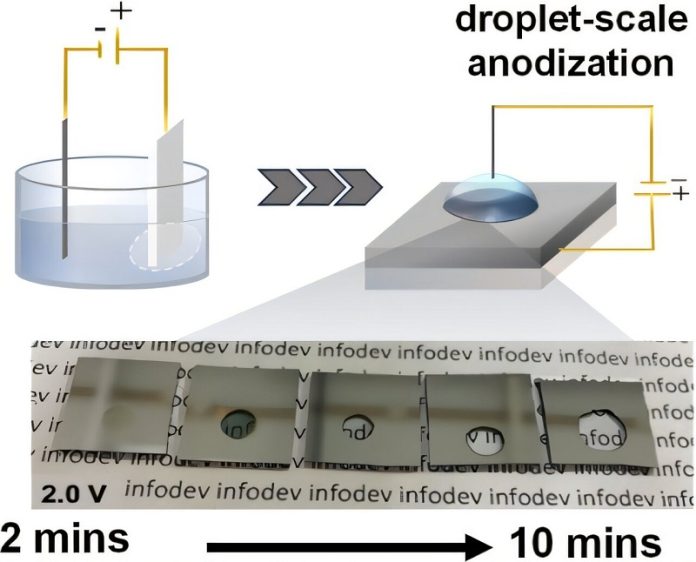
Transparent aluminum sounds like something out of science fiction, but it’s a real material called transparent aluminum oxide (TAlOx).
Known for being extremely hard and scratch-resistant, it is already used in protective coatings for electronics, optical sensors, and solar panels.
In Star Trek, it’s even imagined as a material for starship windows and space aquariums!
Until now, making TAlOx has been difficult and expensive.
Traditional methods require high-powered lasers, vacuum chambers, or large vats of strong acids.
But a breakthrough, led by scientists from the Ateneo de Manila University in the Philippines, could change that.
Instead of soaking whole metal sheets in acid, the researchers applied tiny microdroplets of acid to small aluminum surfaces and used a low electric current.
Surprisingly, just two volts—about the power of a single AA battery—was enough to transform the metal into a glass-like material.
Their study, published in the journal Langmuir, introduces a new method called “droplet-scale anodization.” This process is much simpler, more affordable, and eco-friendly because it reduces chemical waste and requires less energy.
The secret behind this method is a special effect called electrowetting. When an electric field is applied, it changes the behavior of the liquid droplet, allowing scientists to precisely control the transformation of aluminum into TAlOx.
This discovery could make transparent aluminum much cheaper and more widely available. It may lead to better touchscreens, camera lenses, and protective coatings for vehicles and buildings.
Additionally, this technique could help develop smaller and more advanced electronics by turning metal surfaces into transparent, insulating layers at a microscopic level.
With this new approach, the futuristic material once imagined in science fiction may soon become a common part of everyday life.



